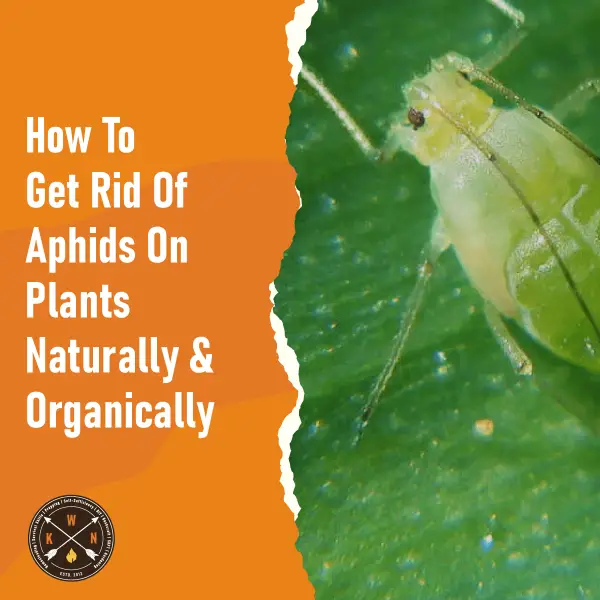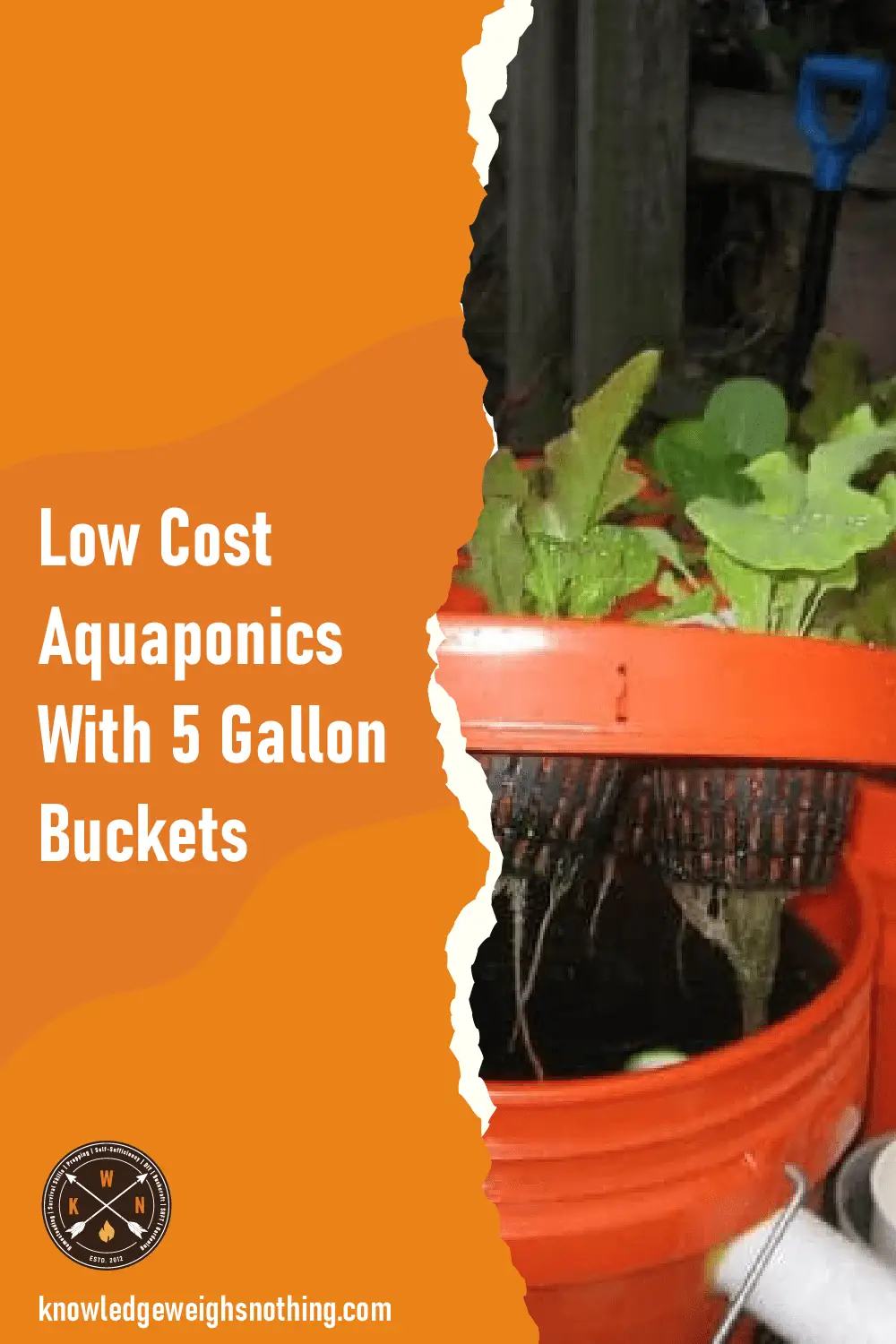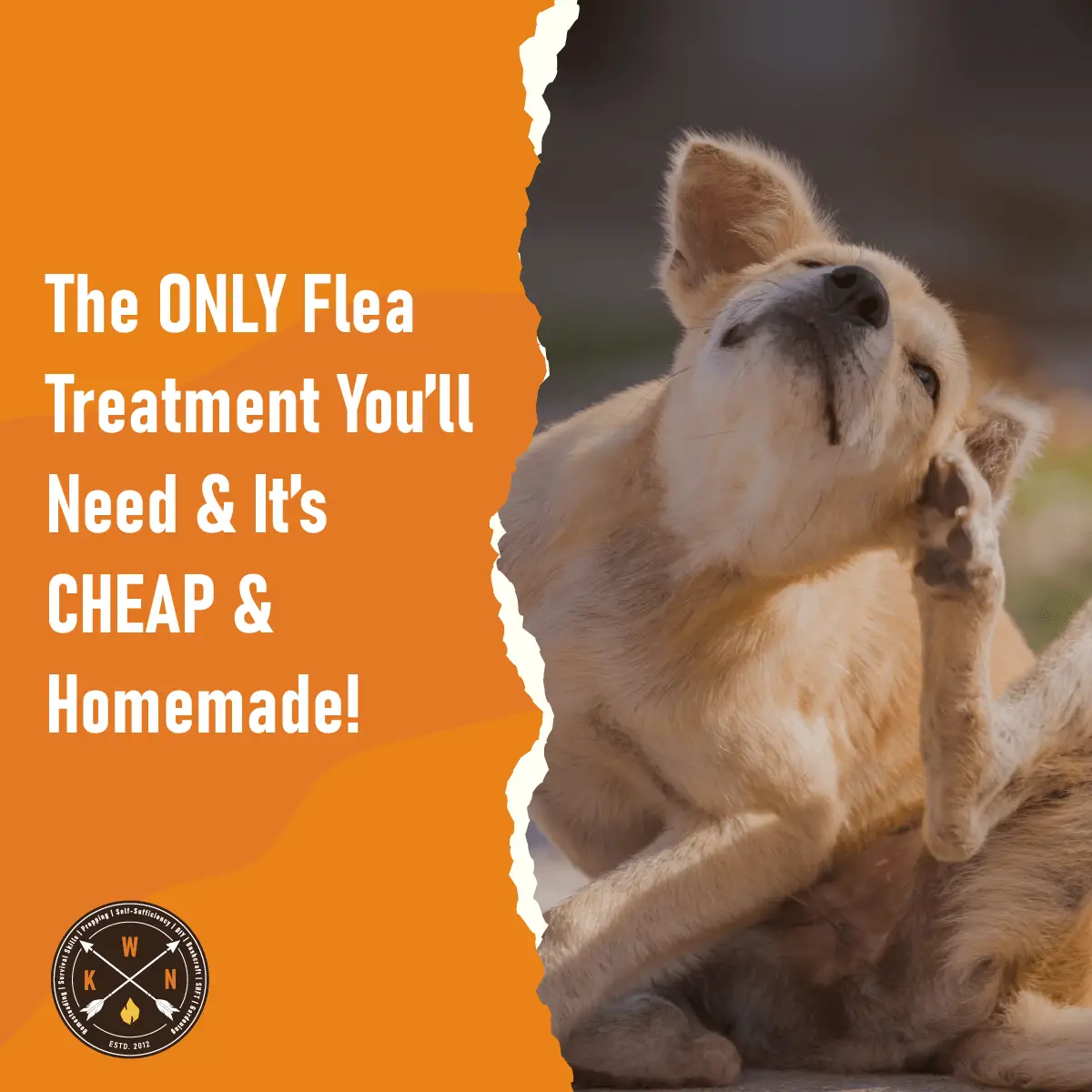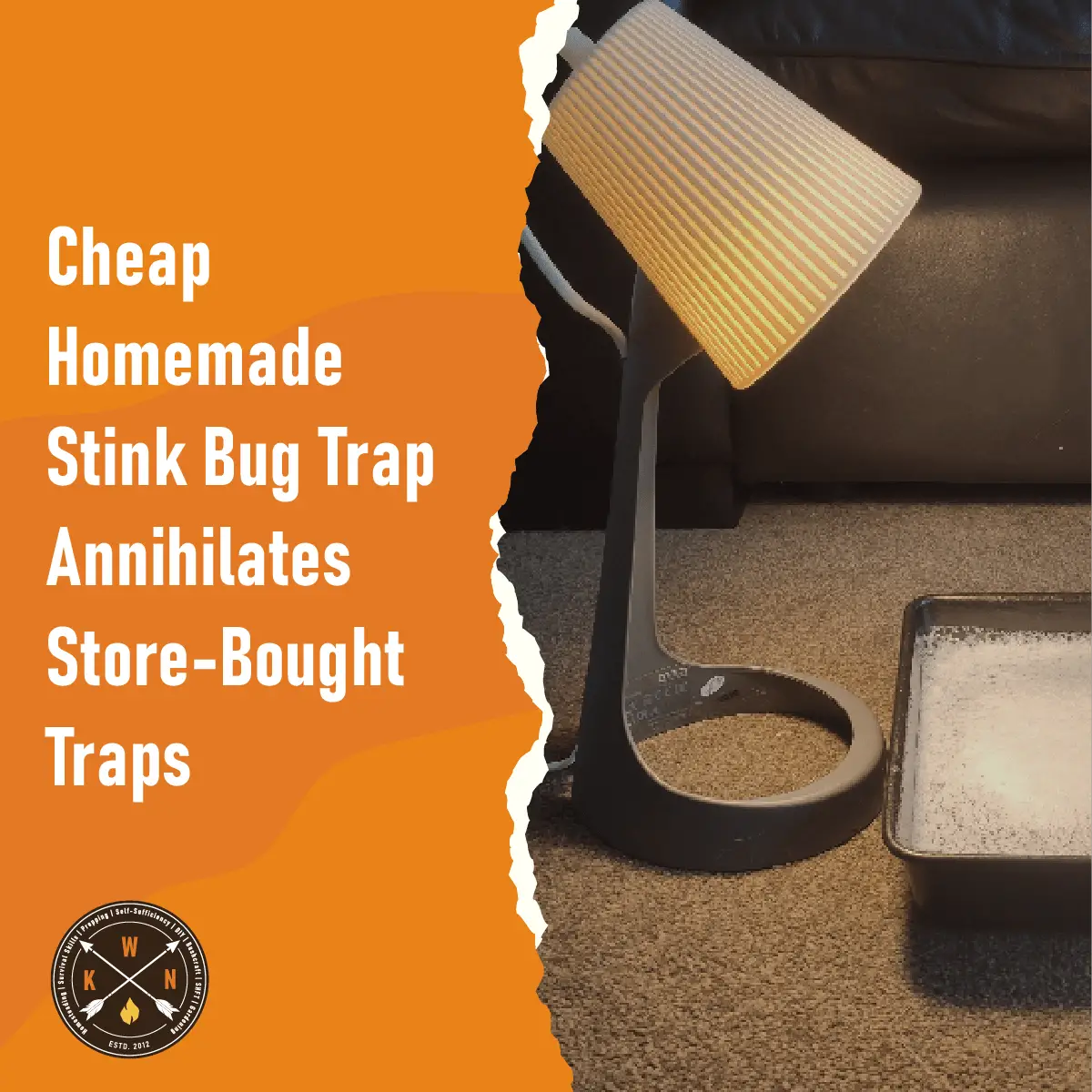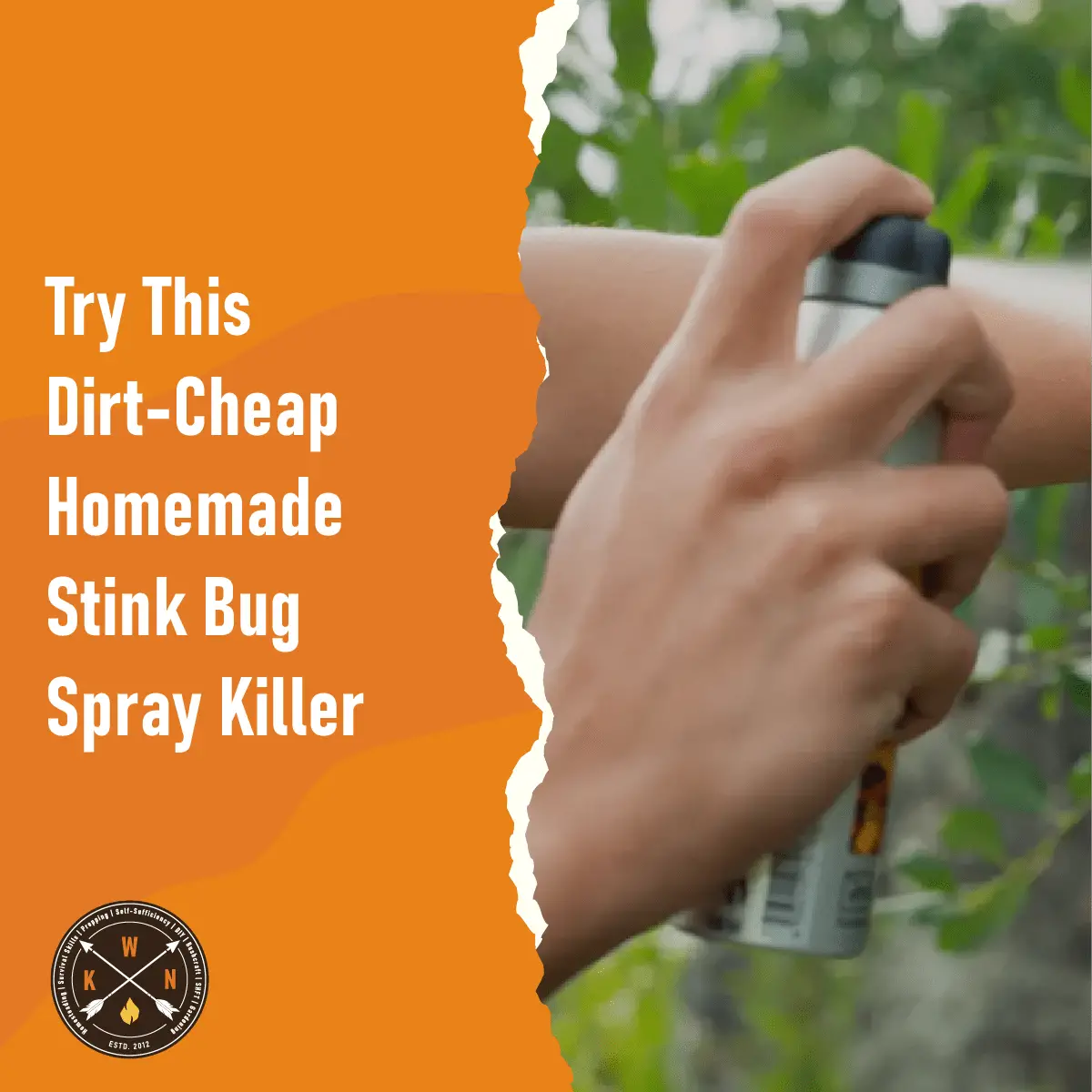You’ve spent countless hours tirelessly tending to your garden. As spring approaches and your hard work pays off in brilliant blooms and luscious fruit, you begin to notice something sinister. What was once thriving, healthy plants are now giving way to the damages of an unknown source. Leaves turn yellow and foliage begins to adopt a strange, sticky substance. In all likelihood, you’re dealing with an aphid infestation.
Every gardener, either casual or professional, must hold a solid understanding of aphids. If unchecked, these tiny insects can completely destroy a once thriving garden. Stop wasting time, and the health of your plants. Continue reading to uncover vital information about aphids and how to get rid of aphids without the use of toxic, chemically-charged pesticides.
Table of Contents
ToggleWhat Are Aphids? An Overview of These Annoying Pests
Aphids are officially defined as being soft-bodied insects identified by their long slender mouths. Their mouths are specially designed to penetrate the most tender parts of plants, such as stems and leaves, and suck out its fluids. Unfortunately, almost every plant species is vulnerable to one or more aphid species. Although there are many different type of aphids, the methods used to get rid of aphids is relatively universal.
The Physical Appearance of Aphids
Looking closely at an aphid, you’d notice it features a pear-shaped body highlighted by an antennae and long legs. Its coloration can vary from red, black, brown, yellow or green. The coloration of an aphid is based upon its species and the type of plant it feeds on. Several aphid species feature a woolly or waxy appearance. This appearance is due to a unique substance it secretes over the surface of its body.
In general, adult aphids are wingless insects; however, there are some species that feature small wings. The winged variety are typically found during spring and fall months. While it’s possible find only one or two aphids, the majority of these insects travel in dense colonies. These gatherings of aphids are generally found on the leaves and stems of plants, which make identifying them much easier than single bugs. A great way to identify an aphid is to disturb the plant. Unlike other pests, such as leafhoppers, aphids tend to stay still when disturbed, which actually makes it easier to remove or kill the aphids.
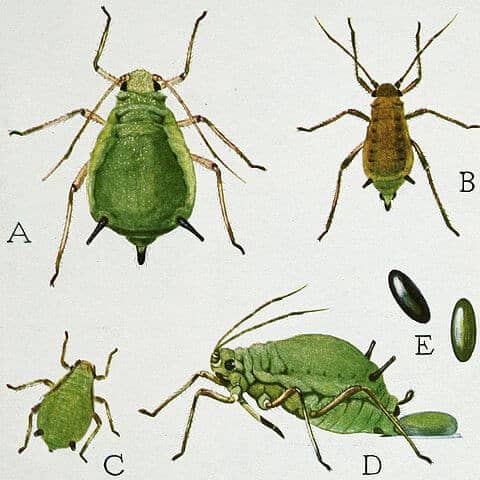 Life cycle of an aphid
Life cycle of an aphid
The Life Cycle of an Aphid
Aphids produce many generations throughout a single year. Female aphids give birth to live offspring. The average female aphid can produce up to 12 newborns each day – all without mating. This asexual reproduction can result in a massive colony in a relative short amount of time. Aphid nymps molt, or shed their skin, four times before reaching adulthood. Unlike other pests, there is no pupal stage. In some species, the aphids produce an egg after mating. This occurs during late fall. Its purpose is to ensure the species survives during the harsh winter months as the shell provides extra insulation. These eggs are generally laid on perennial plants to survive the winter.
During warmer months, the molting stages are swift. In general, a nymph can pass through the four molting phases within seven to eight days. Since each adult aphid can produce an average of 80 nymphs within a week or so, aphid populations can swiftly grow out-of-control. This can be a serious problem for gardens and farms.
Damage Caused by Aphids
If you have low to moderate aphid populations in your garden, the damage caused to plants will likely go unnoticed. However, when a population grows large, the damage can be widespread and serious. Because both nymphs and adults feed on the juices of plants, the entire plant can be damaged by their presence. The most notable damage will be on new growth.
If you’re trying to determine whether or not your plants are being attacked by these creatures, check for the following:
- Misshapen, stunted or yellowing leaves. If you notice this in your garden, make sure to check on the underside of leaves. This is where the majority of aphids hide.
- Check the surface of leaves. A common sign of an aphid infestation is a film of sticky residue. This is caused by aphids sucking sap out of the plant. The waste of aphids, known as honeydew, is a sugary liquid. This secretion often attracts other insects, such as ants. Therefore, check plants to see if there’s an unusual amount of insect activity on or around its stem and leaves.
- Check the branches and leaves of plants for a fungal growth. This growth, known as sooty mold, is a byproduct of the aphid secretions. When present, the leaves and branches of plants will appear black or discolored.
- Review the shape and size of fruits and flowers. As an aphid feeds on these portions of a plant, their presence can cause the flowers and fruits of plants to become distorted.
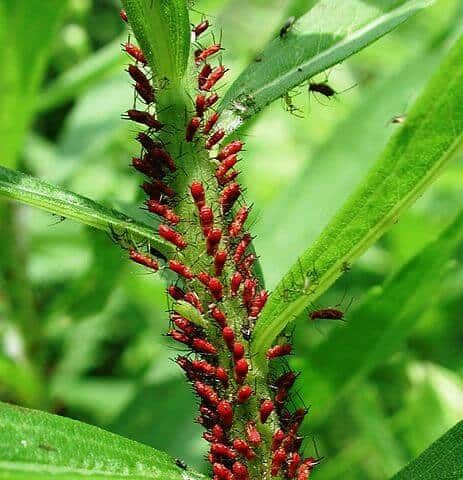 Aphid infestation
Aphid infestation
The Results of Aphid Infestations
Because of the wide array of aphids, the results of an infestation can vary from plant-to-plant. Regardless of what species is attacking your garden, their presence always results in deteroration of plant health and vitality. The following are the most common results of an active aphid infestation:
- As an aphid sucks the juices out of a plant, they are doing more than stealing its vitality. These creatures can be carriers to any virus the host plant may currently have. Therefore, when an aphid moves onto another plant, these viruses may be transmitted. Unfortunately, it only takes one aphid to transmit plant viruses. The resulting damage from a plant virus can be far more damaging than the results of an aphid infestation. This is a major concern for many gardeners, as an entire crop can be ruined by disease due to aphids.
- As an infestation continues, the entire plant can stop growing. This can occur on almost any plant, such as zucchini, tomatoes, and pumpkins. Once the plant stops growing, and its leaves turn yellow, the yield will be significantly diminished.
- In the most serious cases, aphids can attack plant roots. When this occurs, the entire plant may shrivel up and die. New growth and young plants are especially vulnerable to an aphid infestation. Therefore, you must enhance your focus on these plants.
How To Get Rid of Aphids: 10 Organic, All-Natural Aphid Treatments
For years, gardeners and farmers turned to chemically-rich pesticides to control aphid infestations. While this may have killed off these pests, it also damages the environment and can even alter the health of your plants. Because of this, turning to all-natural aphid control options is the recommended choice.
The following 10 all-natural aphid control measures are some of the most effective ways to eliminate these pests without harming your plants or the environment. Use a combination of several methods to ensure your plants remain healthy and aphid-free. You may also want to check out our post on companion plants too.
Method #1 | Physically Removing Aphids By Hand
As mentioned earlier, aphids tend to remain in place when disturbed. Therefore, it’s quite easy to simply remove these pests by hand. Put on a pair of gardening gloves. Inspect the entire plant, specifically the underside of leaves. If you spot an aphid, simply pinch it with your fingers and place in a plastic bag. Continue each day to keep an aphid infestation under control without the use of pesticides.
Method #2 | Repel Aphids With Neem Oil
Dilute pure neem oil in water and pour into a spray bottle. Thoroughly spray each plant, making sure to focus on areas where aphids enjoy hiding. The compounds within neem oil act as natural aphid repellents. This oil also repels other pests, such as cabbage worms, beetles, caterpillars and ants. Another added bonus: neem oil can also ward off a variety of fungal strains known to infect plants.
Method #3 | Kill Aphids With This Herbal Pesticide Treatment
In a small spray bottle, pour equal amounts of rosemary oil, clove oil, peppermint oil and thyme essential oil. Fill the rest of the bottle with water and shake well. Thoroughly spray an entire plant that’s infested with aphids. The active compounds within these essential oils kill adult aphids, nymphs and eggs. It also acts as a general insect repellent without damaging the integrity of your plants. However, always dilute these oils before applying. Non-diluted essential oils can burn delicate plants.
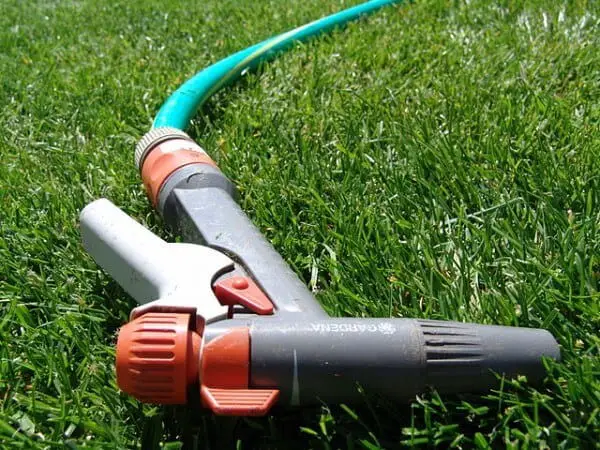 Blast aphids with a hose
Blast aphids with a hose
Method #4 | Blast Aphids WIth A Garden Hose
Perhaps one of the easiest – and most efficient – ways to eliminate aphids from your plants is by simply spraying them with water. With a standard garden hose, thoroughly spray each plant. Make sure to pay special attention to the underside of leaves and to its stalk. It’s important to note that this method can damage young plants and new growth. However, in adult plants, it’s a safe way to eliminate aphids without the use of pesticides. In order for this method to remain effective, you must repeat on a regular basis.
Method #5 | How To Kill Aphids With Diatomaceous Earth
Diatomaceous Earth is an effective natural remedy for aphids. Spray your plants with water, then follow this by dusting a light coating of diatomaceous earth directly to plants. Make sure to apply this powder on the underside of leaves and along the base of plants. The compounds in D.E. penetrate the shell of aphids and dehydrate the bugs from the inside-out. As many farmers and gardeners already know, this is perhaps one of the most effective all-natural aphid control methods.
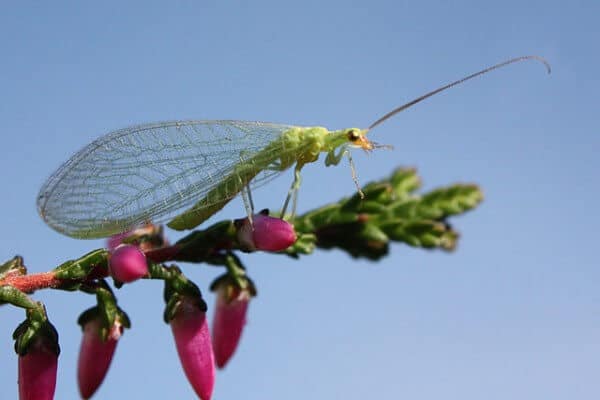 Aphid control with Lacewings
Aphid control with Lacewings
Method #6 | Lacewing Insects Love Eating Aphids
If you’re looking for a unique way to control aphids, then you may want to fight insects with insects. Lacewings have a unique appetite for aphids. These helpful insects aren’t harmful to your plants, but can offer great relief. You may purchase lacewing insects from many gardening supply stores. Place these eggs around plants and watch the aphid population soon go extinct.
Method #7 | Grow Aphid-Resistant Plants
Growing plants, such as catnip, oregano or garlic can be an effective means of work warding off aphids. The scent these plants give off are offensive to aphids. Many gardeners find entire infestations are warded off by simply growing these plants near other plants. You can also plant other herbs, such as clover, mint, dill and fennel.
Method #8 | Plant Onions in Garden
Growing onions near your garden naturally repel aphids. These insects dislike organic compounds, such as those found by onions. By growing onions within your garden, you’ll effectively discourage aphids from growing in and around your plants.
Method #9 | How To Kill Aphids With This Homemade Aphid Spray
If you need a powerful way to eliminate an entire aphid infestation, but wish to avoid chemical pesticides, create the following homemade spray. Its compounds effectively kill aphids.
-
- Warm 1 liter of water and pour into a spray bottle.
- Add a 1/8 of a teaspoon of gelatin into the bottle.
- Add 1/8 teaspoon of ground ginger.
- Thoroughly shake the bottle.
- Spray this mixture around the leave and stalks of plants.
- Repeat every other day until you see the aphids completely disappear.
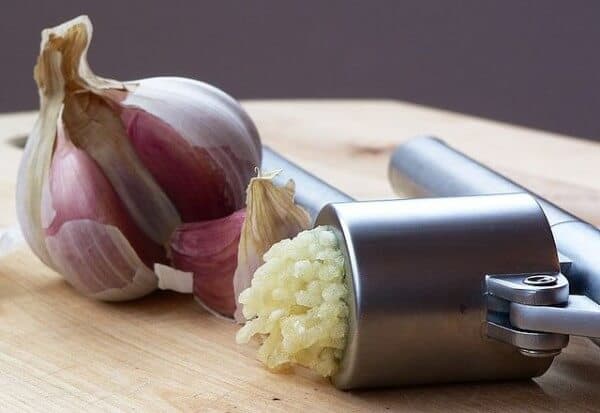 Kill Aphids with garlic spray
Kill Aphids with garlic spray
Method #10 | Aphids Hate Garlic: Make This Garlic Spray
While planting garlic is a great way to ward off aphids, sometimes this isn’t enough. By making a homemade garlic spray, you can effectively thwart an aphid infestation. To make this spray, bring 5 cups of water to a rolling boil. Crush 5 cloves of garlic and add to the boiling water. Cover and allow the water to steep for 10 minutes. Remove the lead and allow the water to cool. Pour in a spray bottle, including the garlic cloves. Thoroughly spray each plant, making sure to pay attention to the underside of leaves and along the stalk. It’s best to do this in the evening before sunset.

